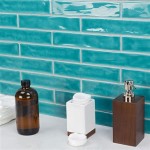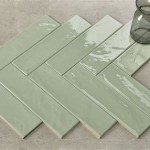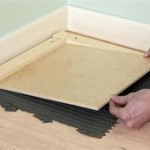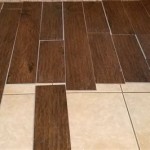Grey Tiles For Kitchen Floor: A Timeless Choice
Grey tiles have emerged as a consistently popular and enduring choice for kitchen flooring, finding favor among homeowners and designers alike. Their versatility, aesthetic appeal, and practical benefits contribute to their status as more than just a passing trend. Understanding the nuances of grey tiles, from material options to design considerations, is crucial for making informed decisions when renovating or building a kitchen.
The appeal of grey tiles extends beyond simple aesthetics; it encompasses a broader sense of balance and adaptability. Grey, in its various shades, acts as a neutral canvas, allowing other design elements within the kitchen to take center stage. This characteristic makes grey tiles a safe yet stylish option for homeowners uncertain about committing to bolder, more specific color palettes. Furthermore, the inherent properties of various tile materials, coupled with the visual impact of grey, contribute to the longevity and functionality of a grey-tiled kitchen floor.
Versatility in Design and Style
The range of grey shades available in tiles provides remarkable design flexibility. From light, almost white greys that brighten a space to dark, charcoal tones that create a sense of depth and sophistication, the possibilities are virtually limitless. This versatility allows grey tiles to seamlessly integrate into a variety of kitchen styles, including modern, minimalist, farmhouse, and industrial designs. The adaptability of grey ensures that the flooring complements the overall aesthetic, regardless of the chosen décor.
Light grey tiles, for instance, are excellent for smaller kitchens, as they reflect light and create an illusion of spaciousness. They pair well with pastel cabinets and light wood accents, fostering a bright and airy atmosphere. Conversely, darker grey tiles can anchor a larger kitchen, providing a grounding effect and a sense of stability. They can be effectively combined with stainless steel appliances, dark cabinetry, and concrete countertops to achieve a modern or industrial look. Mid-tone greys offer a balanced approach, working harmoniously with a wide spectrum of colors and materials.
Beyond color variations, the size and shape of grey tiles also contribute to design versatility. Large format tiles, for example, minimize grout lines, resulting in a cleaner, more streamlined appearance, which is particularly suitable for contemporary kitchens. Smaller mosaic tiles, on the other hand, can add texture and visual interest, making them ideal for creating focal points or adding a touch of character. Rectangular tiles can be arranged in various patterns, such as herringbone or brick lay, to further enhance the design aesthetic. The choice of tile size and shape should be carefully considered in relation to the overall kitchen design and the desired visual impact.
The finish of the grey tiles is another crucial factor influencing the overall style. Matte finishes provide a subtle, understated elegance and are often preferred in minimalist or farmhouse kitchens. Polished finishes, on the other hand, offer a sleek, reflective surface that complements modern and glamorous designs. Textured finishes add depth and tactile appeal, making them suitable for kitchens aiming for a rustic or industrial aesthetic. The finish of the tiles should be chosen to align with the desired ambiance and the overall design concept of the kitchen.
Practical Benefits of Grey Tiles
The appeal of grey tiles extends beyond aesthetics; they offer several practical advantages that make them a desirable choice for kitchen flooring. Notably, grey tiles are excellent at concealing dirt and stains. Unlike lighter-colored tiles that readily show every speck of dust or splash of liquid, grey tiles tend to camouflage these imperfections, making them a more forgiving option for high-traffic areas like the kitchen. This feature is especially beneficial for busy households where maintaining a perpetually spotless floor is challenging.
Furthermore, the durability of tile materials, such as porcelain and ceramic, contributes to the long-term practicality of grey tiles. These materials are resistant to scratches, dents, and stains, ensuring that the flooring remains in good condition for years to come. Porcelain tiles, in particular, are known for their exceptional strength and water resistance, making them an ideal choice for kitchens, where spills and moisture are common occurrences. The inherent durability of these tile materials minimizes the need for frequent repairs or replacements, resulting in long-term cost savings.
Maintenance of grey tiles is generally straightforward. Regular sweeping or vacuuming is sufficient to remove loose dirt and debris, while occasional mopping with a mild detergent will keep the tiles clean and hygienic. The non-porous nature of most tile materials prevents the absorption of liquids, making them resistant to stains and easy to clean. However, it is important to seal the grout lines to prevent staining and maintain their appearance. Properly sealed grout lines will also prevent the growth of mold and mildew, ensuring a healthier kitchen environment.
The thermal properties of tile can also be considered a practical benefit. Tiles, particularly ceramic and porcelain, are excellent conductors of heat, making them compatible with underfloor heating systems. This can provide added comfort in colder climates, creating a warm and inviting kitchen space. In warmer climates, tiles can help to keep the kitchen cool by dissipating heat. The thermal properties of grey tiles contribute to the overall comfort and energy efficiency of the kitchen.
Material Choices and Considerations
Several materials are commonly used for grey kitchen floor tiles, each with its own unique characteristics and advantages. Porcelain tiles are a popular choice due to their durability, water resistance, and wide range of design options. They are manufactured through a high-temperature firing process, resulting in a dense and non-porous material that is highly resistant to staining and scratching. Porcelain tiles are suitable for high-traffic areas and are available in a variety of grey shades, sizes, and finishes. They are a versatile and long-lasting option for kitchen flooring.
Ceramic tiles are another common choice, offering a balance of affordability and durability. While not as dense or water-resistant as porcelain, ceramic tiles are still suitable for kitchen use, especially in areas with lower foot traffic. They are also easier to cut and install than porcelain, making them a popular choice for DIY projects. Ceramic tiles are available in a wide range of grey shades and designs, providing ample options for homeowners seeking a budget-friendly option.
Natural stone tiles, such as slate and limestone, offer a unique and luxurious aesthetic. Slate tiles are known for their distinctive texture and natural variations in color, adding character and visual interest to the kitchen floor. Limestone tiles provide a softer, more subtle look with a warm, earthy tone. However, natural stone tiles are more porous than porcelain or ceramic and require regular sealing to prevent staining and water damage. They also tend to be more expensive and require professional installation. The choice of natural stone tiles involves careful consideration of the material's properties and maintenance requirements.
Concrete tiles are gaining popularity as a modern and industrial option for kitchen flooring. They offer a sleek, minimalist aesthetic and are known for their durability and strength. Concrete tiles can be stained or dyed in a variety of grey shades, allowing for customization and design flexibility. However, they are also porous and require sealing to prevent staining and water damage. Concrete tiles can be more expensive than porcelain or ceramic and require professional installation due to their weight and size. The choice of concrete tiles reflects a commitment to a modern and industrial design aesthetic.
When selecting the material for grey kitchen floor tiles, it is essential to consider factors such as durability, water resistance, maintenance requirements, cost, and aesthetic preferences. Porcelain tiles offer a good balance of these factors, making them a popular choice for many homeowners. Ceramic tiles provide a more affordable option, while natural stone and concrete tiles offer unique aesthetic appeal. The final decision should be based on a careful evaluation of the specific needs and priorities of the homeowner.
In summary, the selection of grey tiles for a kitchen floor is a decision that calls for careful consideration of several factors. The breadth of styles, the practical advantages they offer, and the multitude of material choices available each play a significant role in the final outcome. By thoughtfully weighing these aspects, homeowners can create a kitchen floor that is not only aesthetically pleasing but also durable, functional, and timeless.

Kitchen Floor Tile Ideas 2025 Marble Systems

Our Favourite Grey Kitchen Tile Ideas Stonesuper

26 Kitchen Floor Tile Ideas For A Unique And Timeless Look Coco Lapine Designcoco Design

Grey Kitchen Tiles Ideas Quorn Stone

Kitchen Floor Tile Ideas 2025 Marble Systems

Top 10 Kitchen Floor Tiles Trends 2024 Stone Tile Depot

The Must Know Pros And Cons Porcelain Kitchen Floor Tiles Marble Systems

Unveiling The Best Floor Tiles For Your Home A Brief Guide

26 Kitchen Floor Tile Ideas For A Unique And Timeless Look Coco Lapine Designcoco Design

Marble Kitchen Floor Solutions Systems
Related Posts








